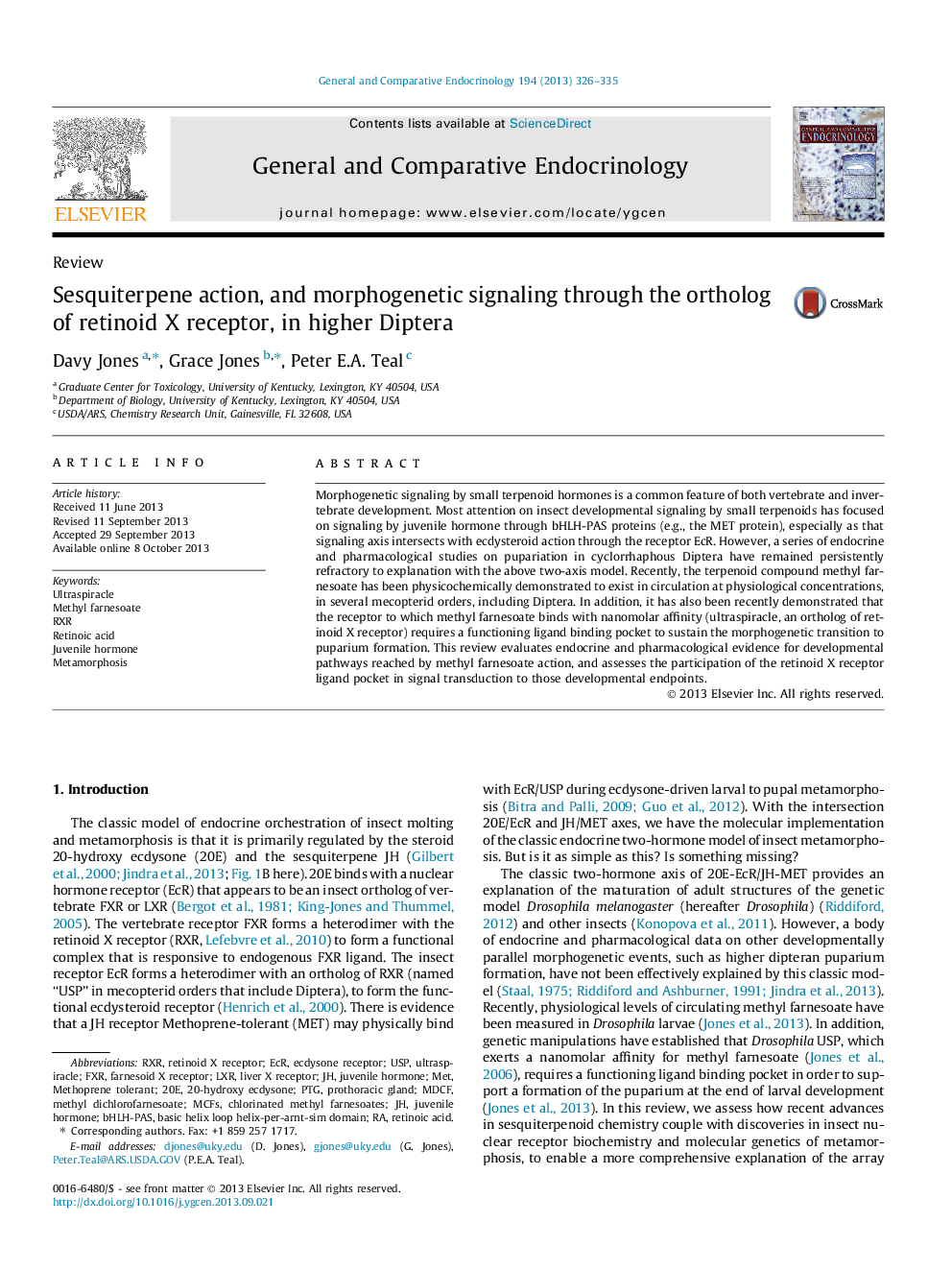| Article ID | Journal | Published Year | Pages | File Type |
|---|---|---|---|---|
| 2800291 | General and Comparative Endocrinology | 2013 | 10 Pages |
•Classical endocrine data indicate that secretion from the corpora allata regulates puparium formation in higher Diptera.•Morphogenetic events in puparium formation are not explained by two-axis a JH III/ecdysone model of metamorphosis.•Pharmacological, physiochemical and genetic data support a role of methyl farnesoate in puparium formation.•Yet another orphaned terpenoid, bisepoxyJH III, warrants study for its potential contributions to pupariation.
Morphogenetic signaling by small terpenoid hormones is a common feature of both vertebrate and invertebrate development. Most attention on insect developmental signaling by small terpenoids has focused on signaling by juvenile hormone through bHLH-PAS proteins (e.g., the MET protein), especially as that signaling axis intersects with ecdysteroid action through the receptor EcR. However, a series of endocrine and pharmacological studies on pupariation in cyclorrhaphous Diptera have remained persistently refractory to explanation with the above two-axis model. Recently, the terpenoid compound methyl farnesoate has been physicochemically demonstrated to exist in circulation at physiological concentrations, in several mecopterid orders, including Diptera. In addition, it has also been recently demonstrated that the receptor to which methyl farnesoate binds with nanomolar affinity (ultraspiracle, an ortholog of retinoid X receptor) requires a functioning ligand binding pocket to sustain the morphogenetic transition to puparium formation. This review evaluates endocrine and pharmacological evidence for developmental pathways reached by methyl farnesoate action, and assesses the participation of the retinoid X receptor ligand pocket in signal transduction to those developmental endpoints.
